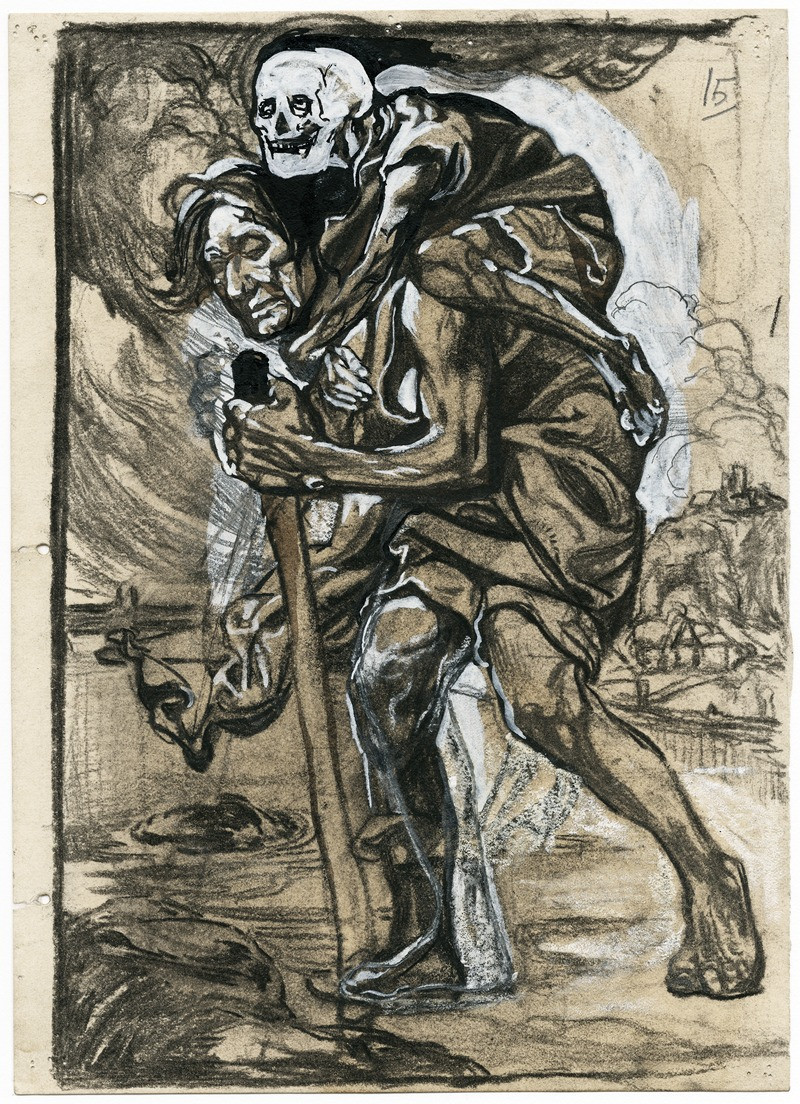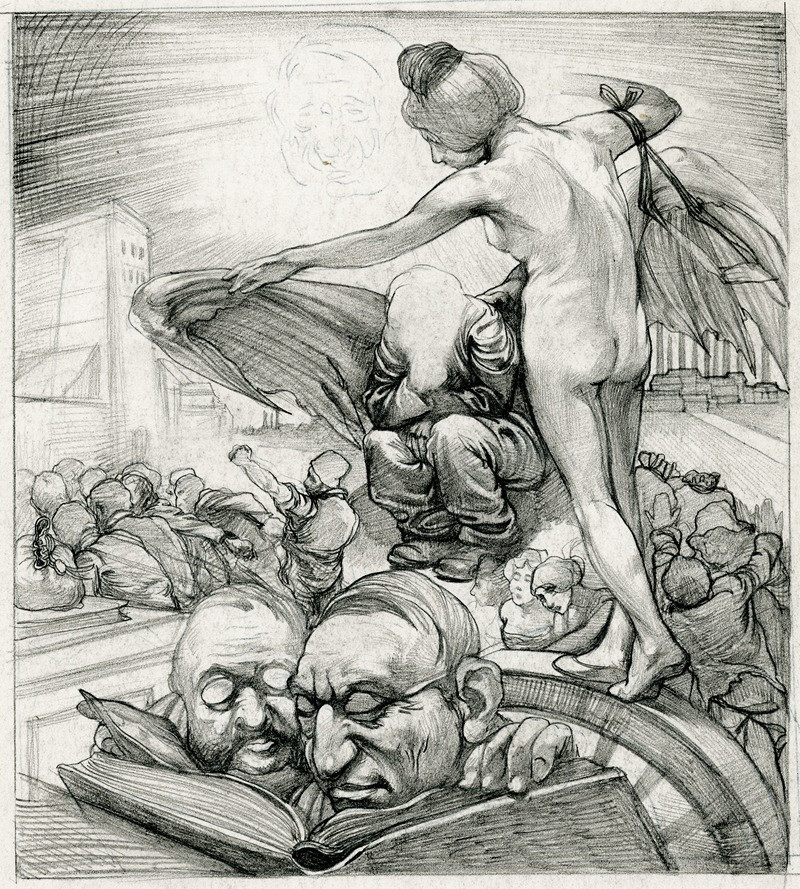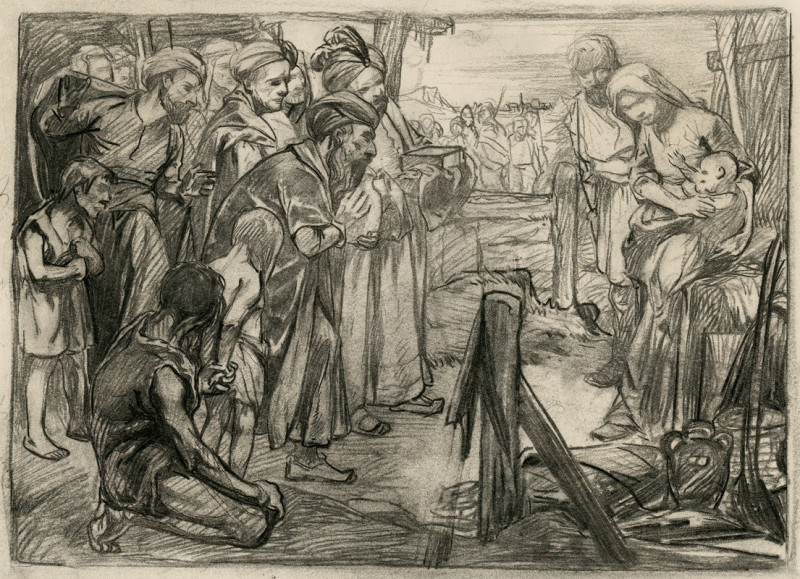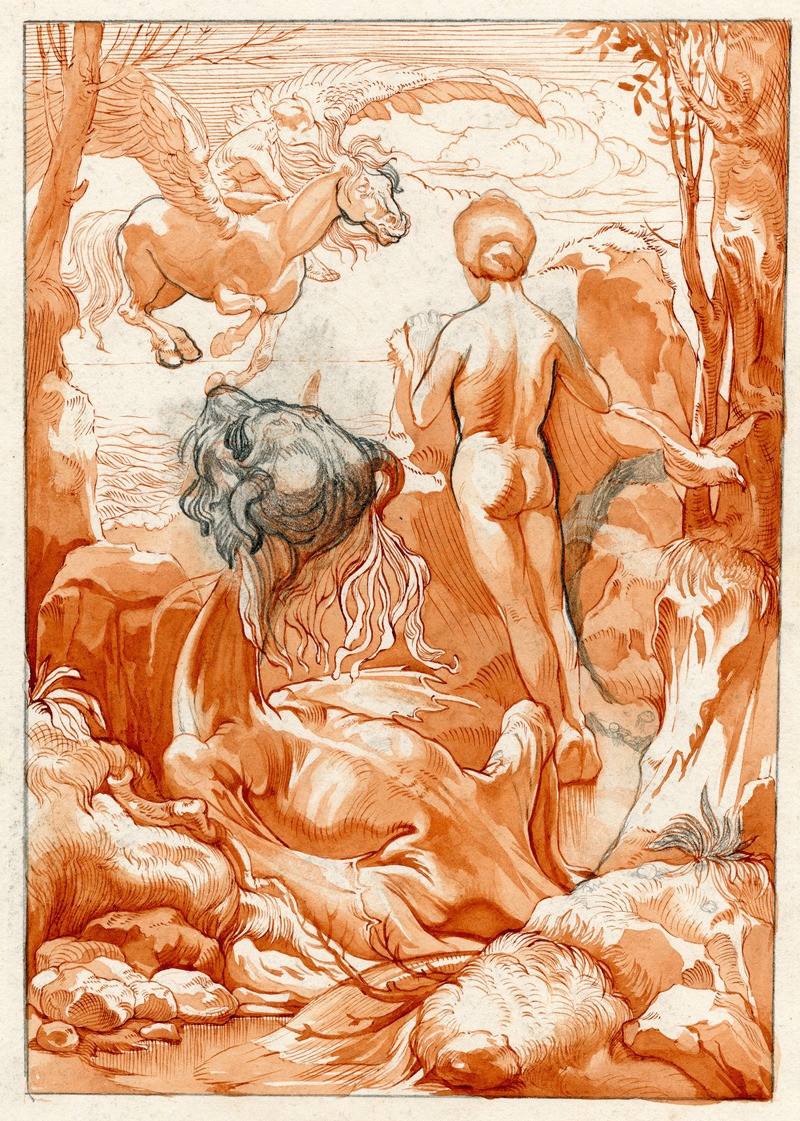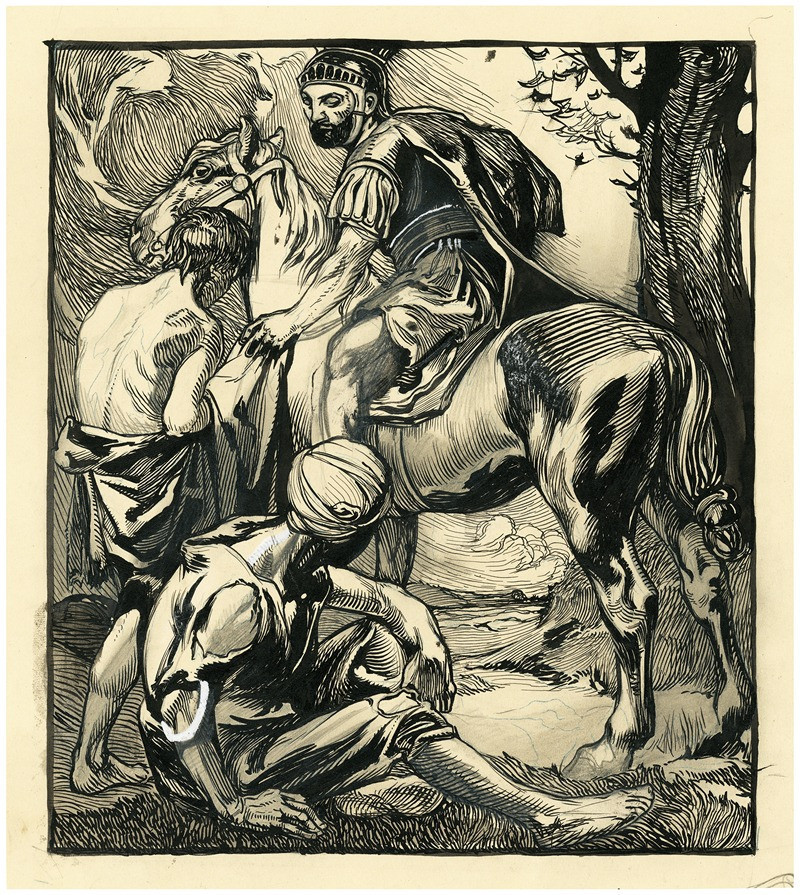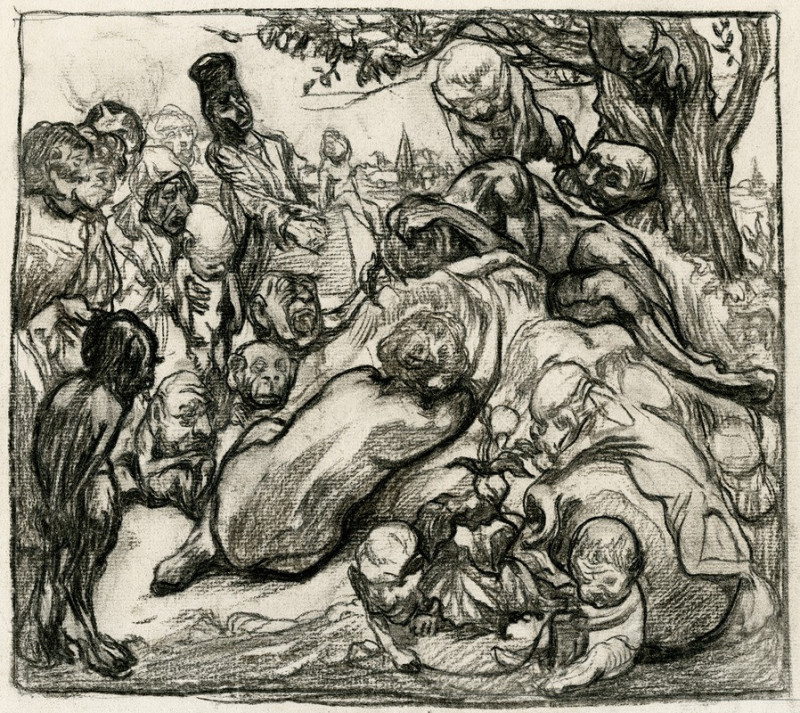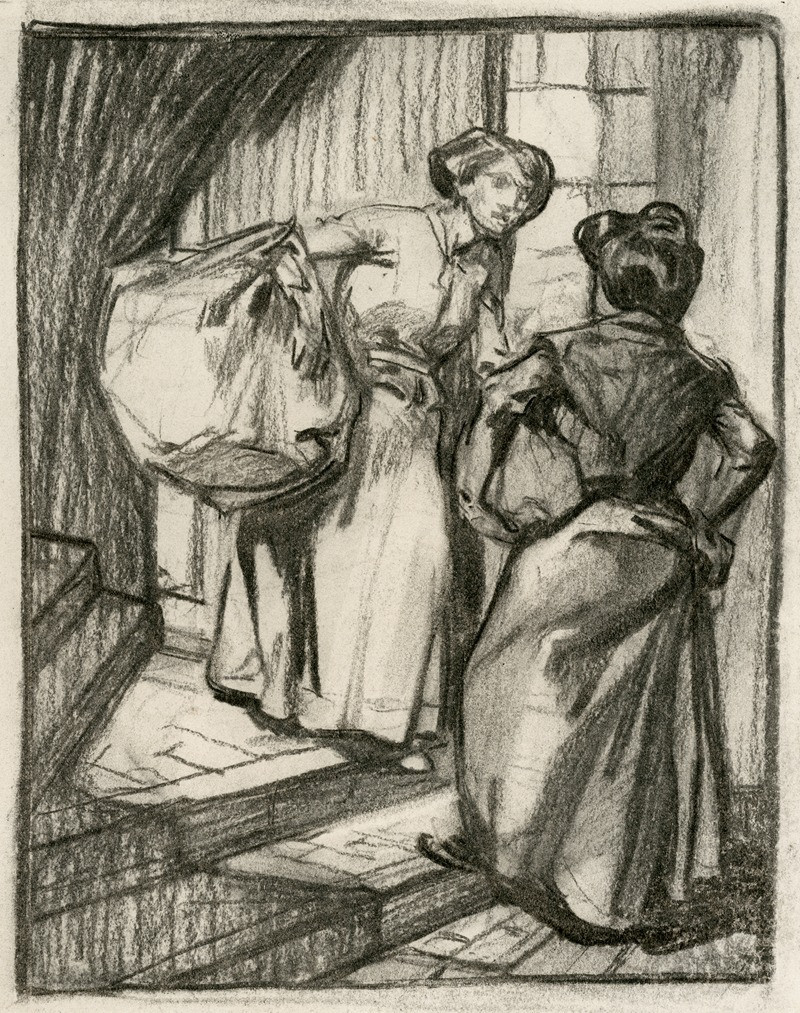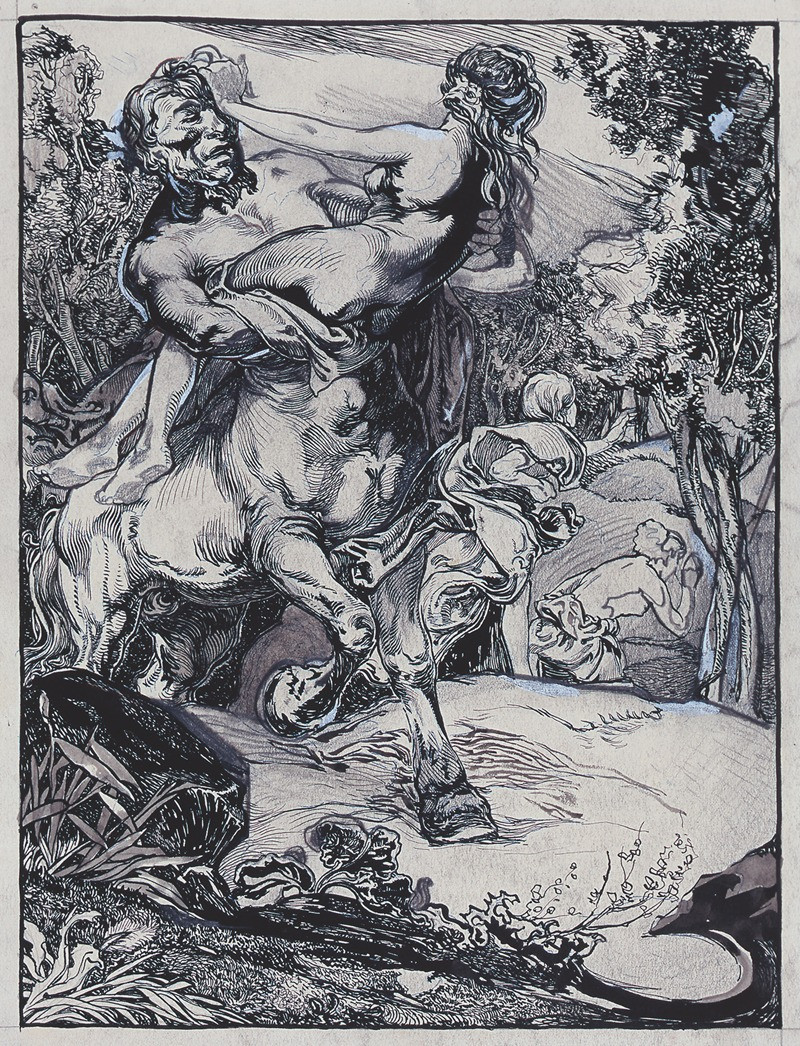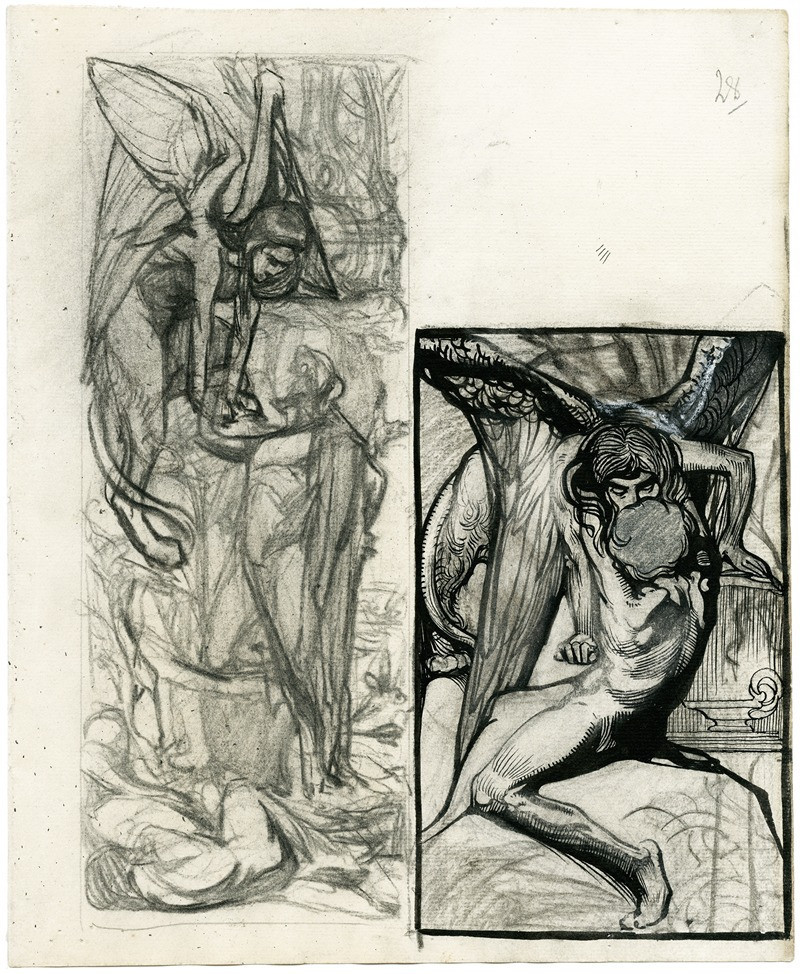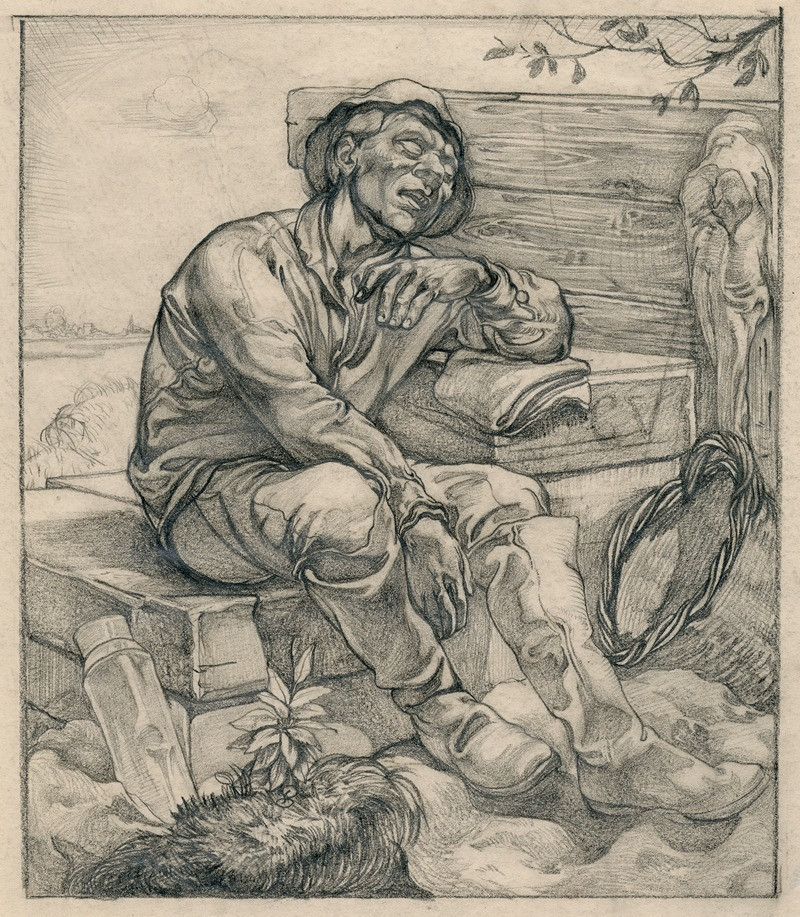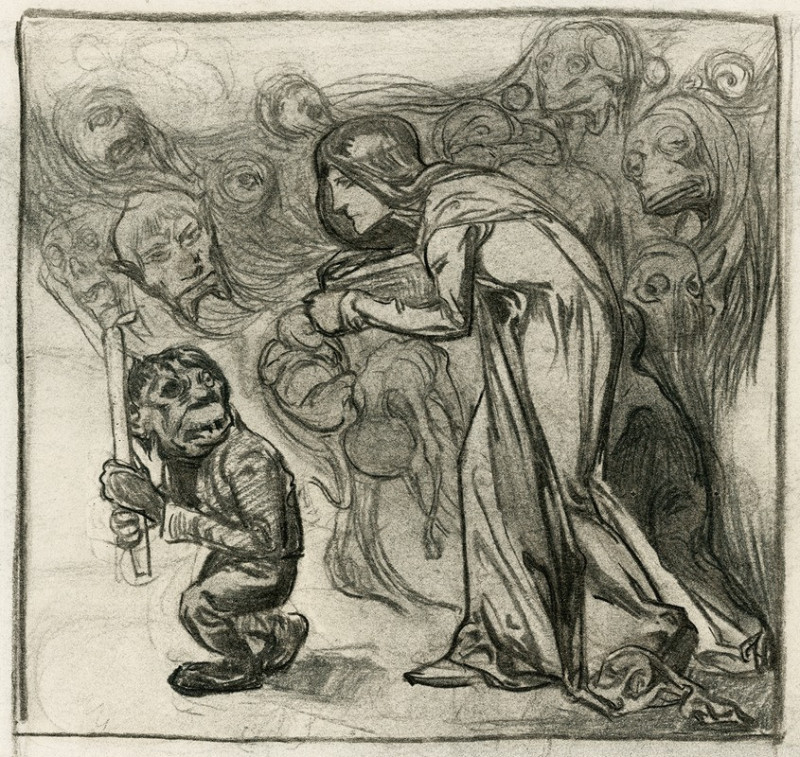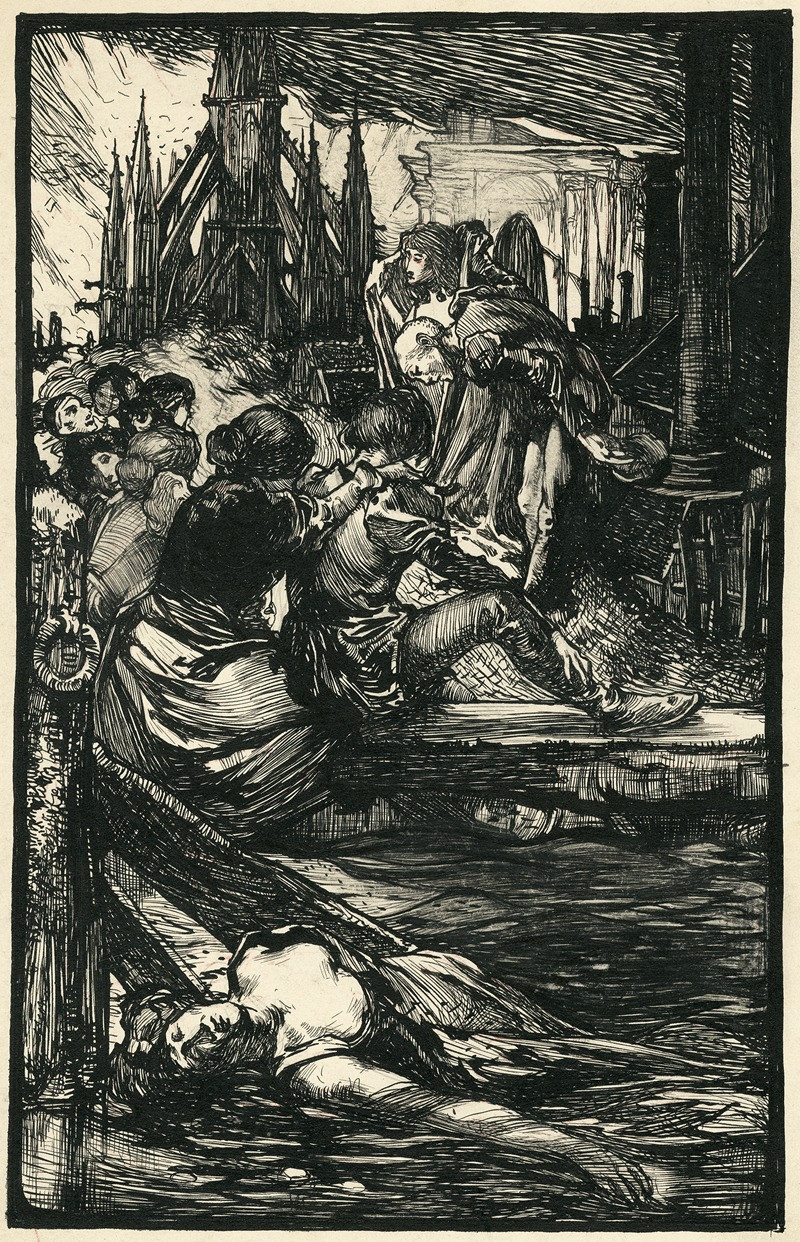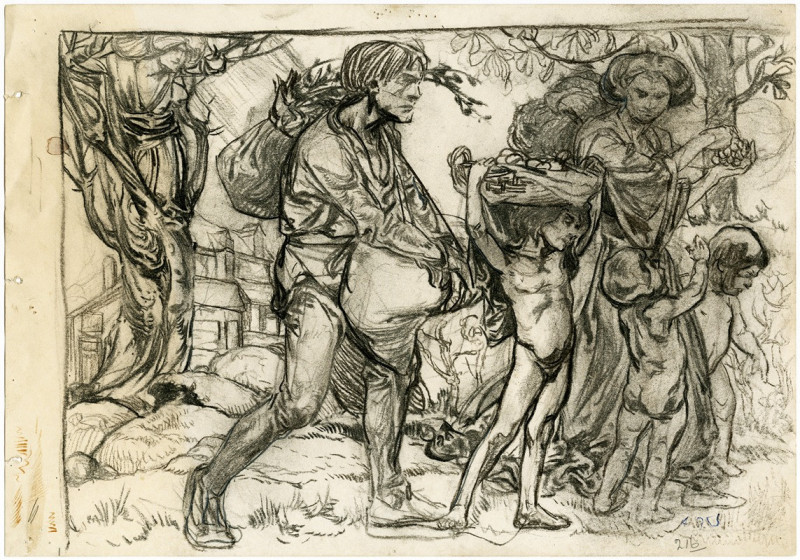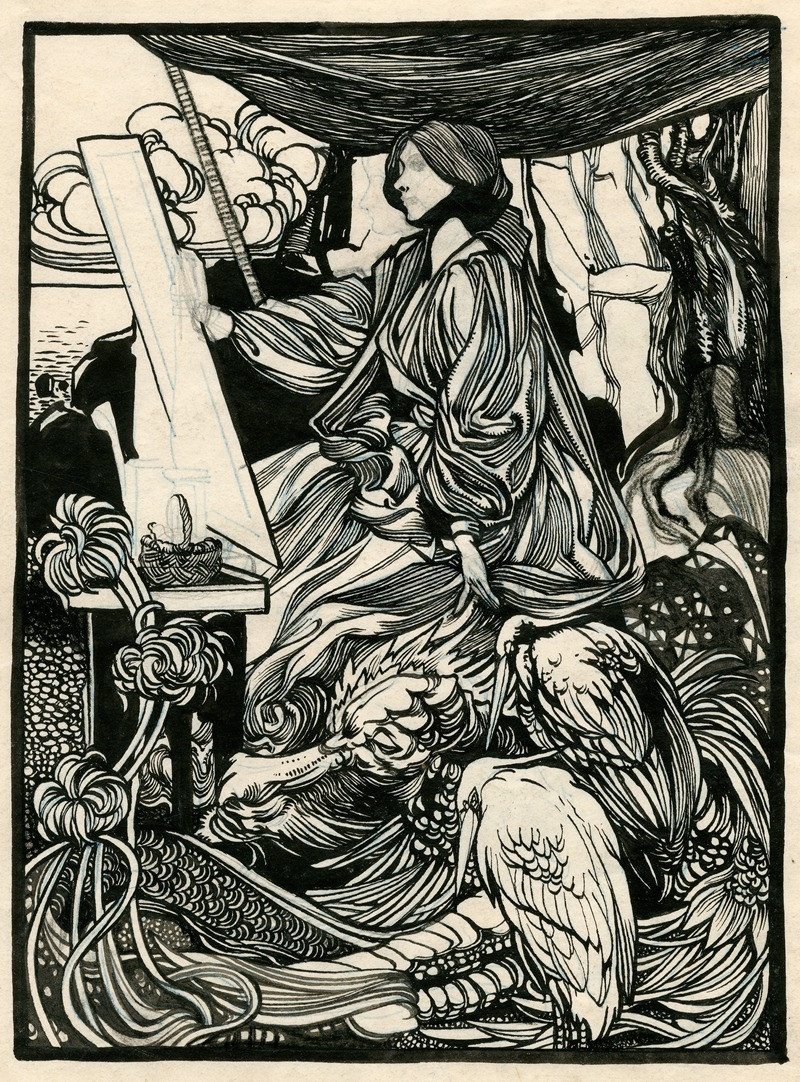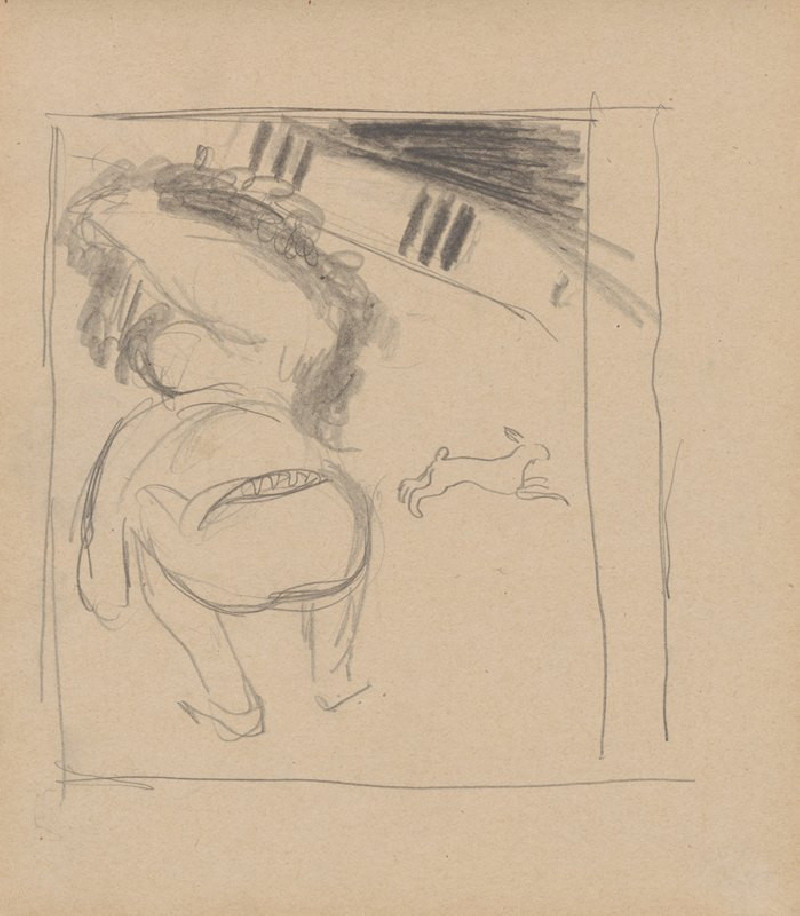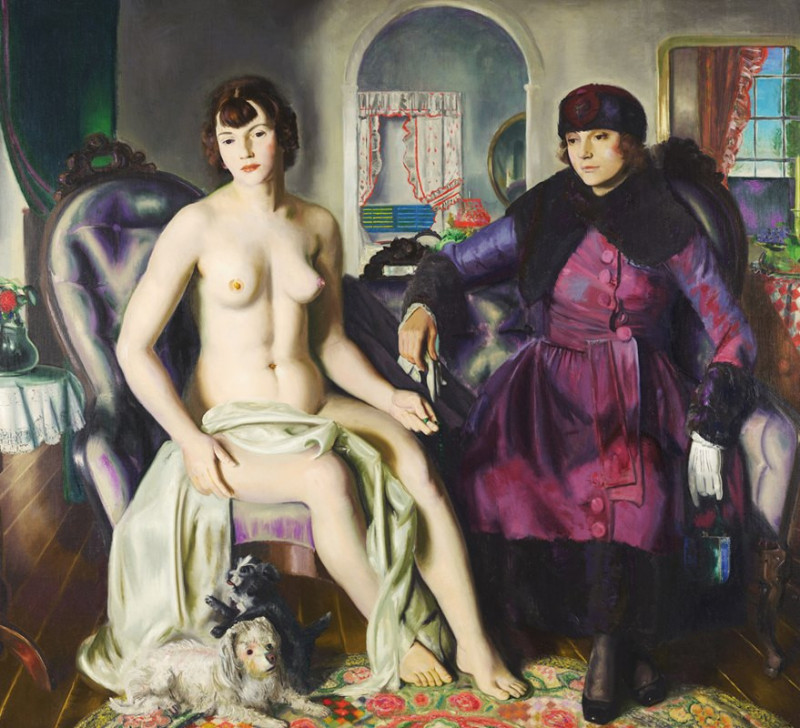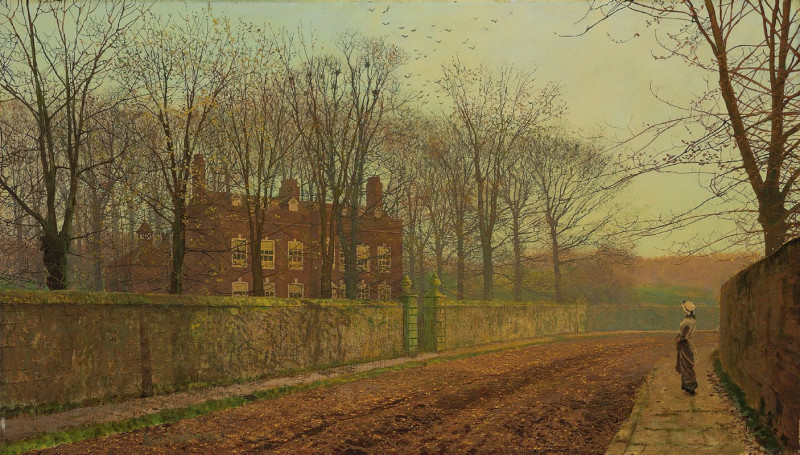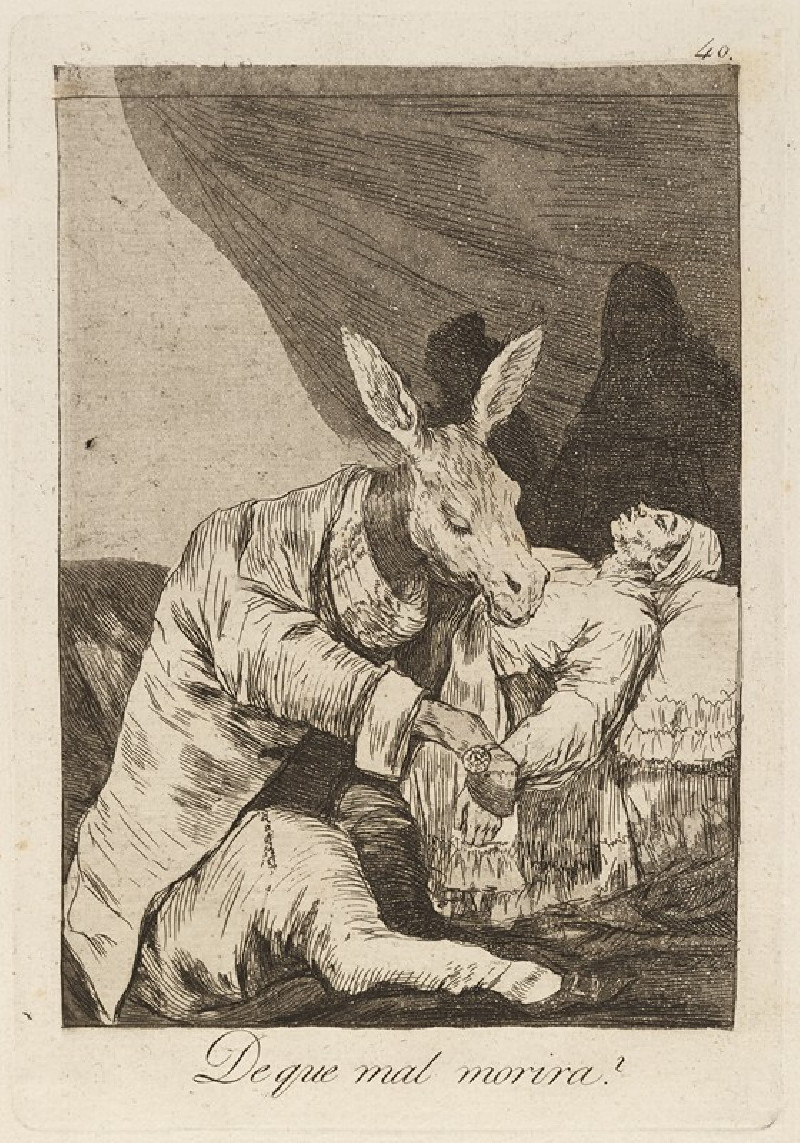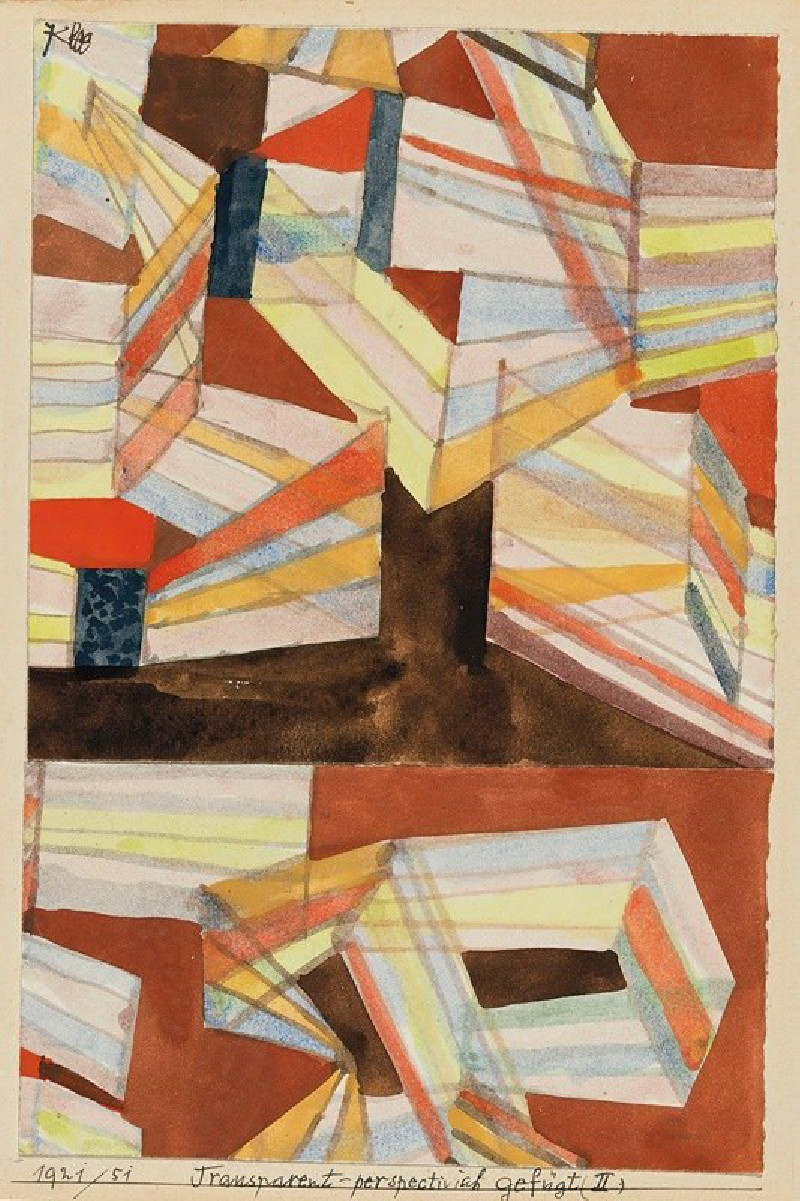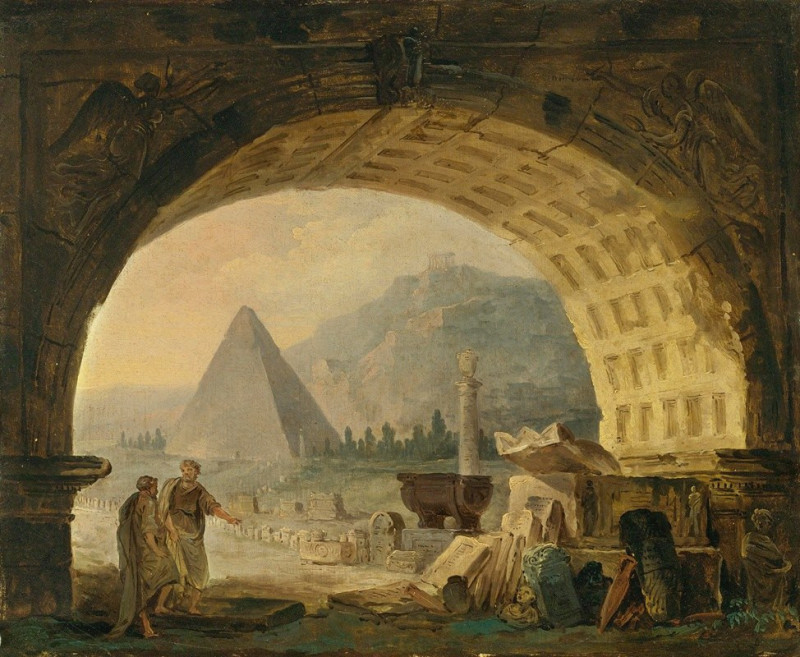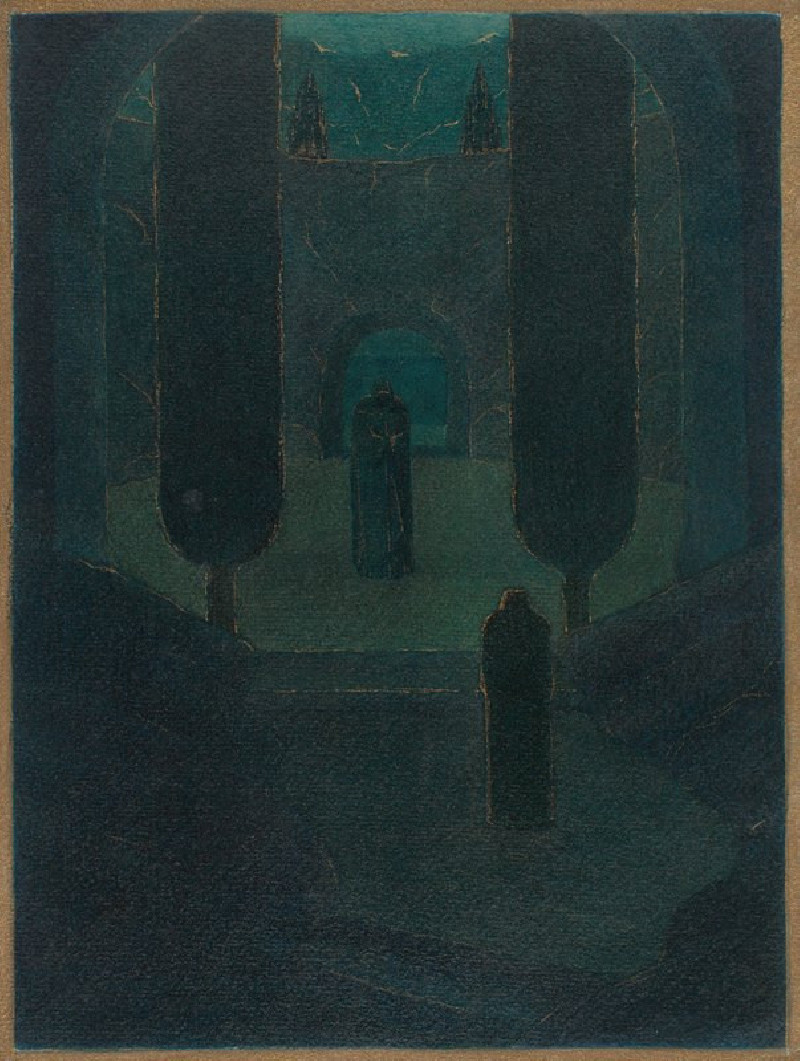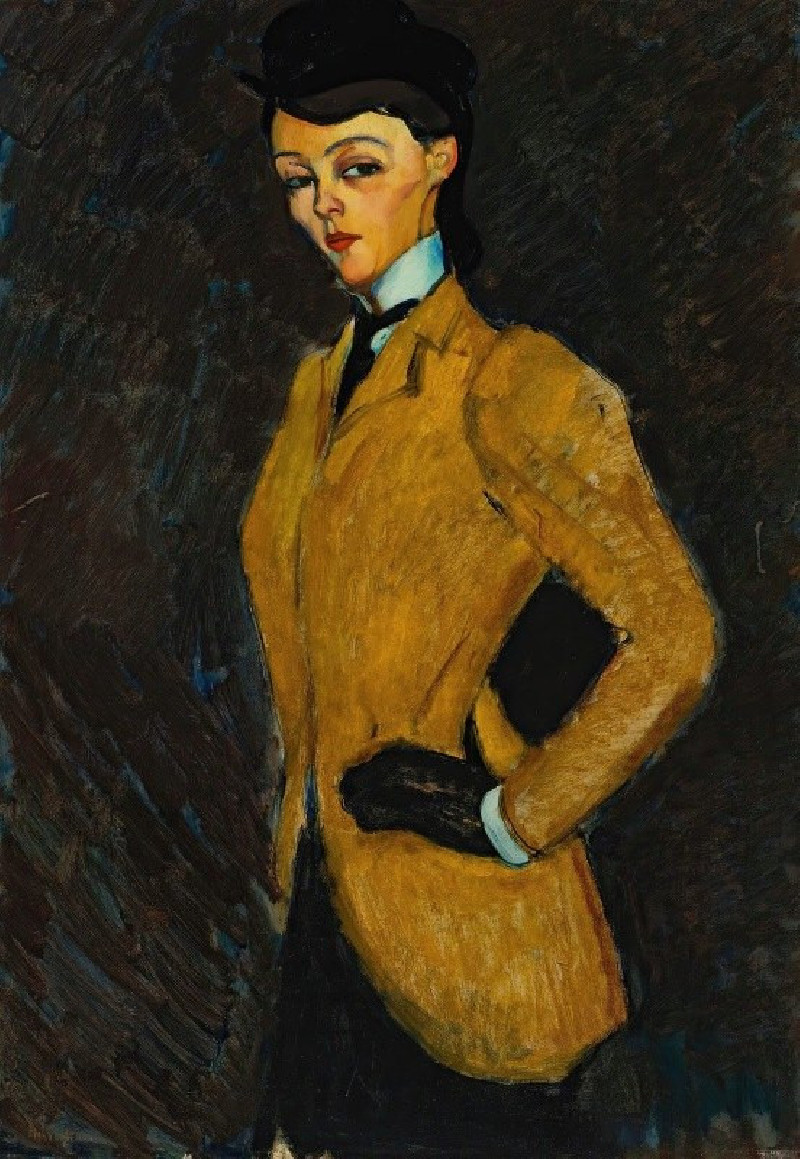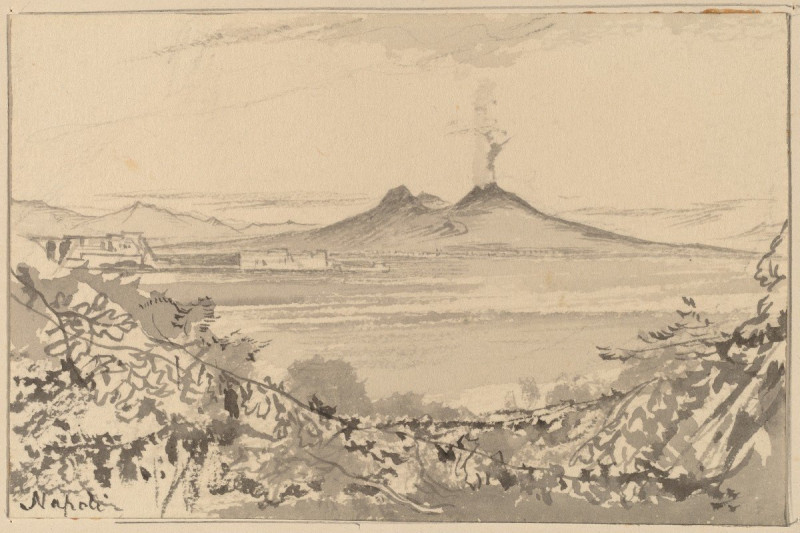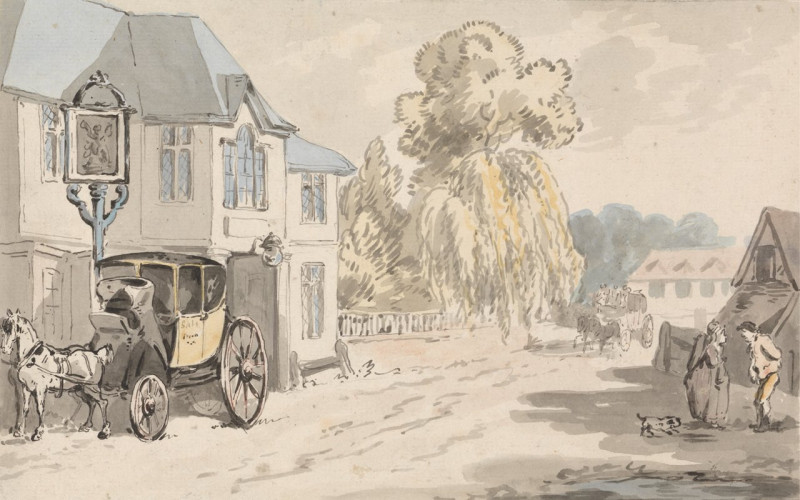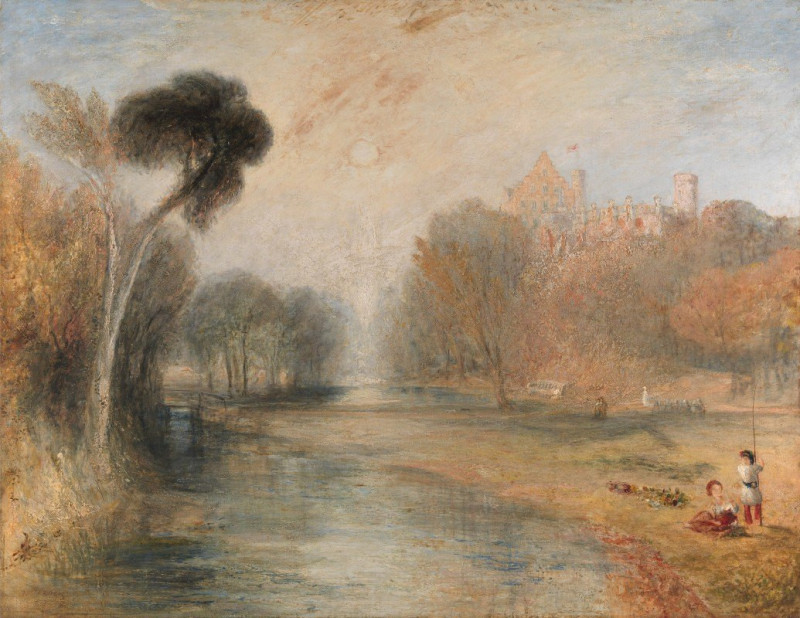Door het water wadende man met skelet op de rug
Technique: Giclée quality print
Recommended by our customers
More about this artwork
"Door het water wadende man met skelet op de rug" by Johannes Josephus Aarts is a compelling artwork that engages viewers in the depths of symbolic and emotional storytelling. This drawing depicts a gaunt and weary man, trudging through water with the oppressive weight of a skeleton clinging tightly to his back. The man, exhausted yet resilient, grips a stick for support, his expression one of resolve amid despair.The skeleton, a universal symbol of death, sits menacingly on the man’s shoulders, suggesting themes of mortality, the inevitability of death, or possibly the burdens of life one must carry. The scene is set against a muted, somber background that evokes a sense of isolation and hardship.Aarts's use of stark monochromatic tones enhances the grim reality of his subject, while the detailed textures in the water and the figures’ drapery invite viewers to contemplate the struggle and the toil depicted.
Delivery
Returns
Johannes Josephus Aarts was a Dutch painter, illustrator, lithographer, engraver, etcher, writer, academic teacher and director, lecturer, sculptor and book-cover designer.
Jan Aarts received training in the Royal Academy of Art, The Hague. He was active there until 1911, and in Amsterdam from 1911 to 1934. Initially, until around 1900, Aarts worked above all on engravings. Thereafter he began to also use other graphic methods. In his work, one found depictions of farmworkers, dyke workers and later also tramps, beggars and invalids. Between 1920 and 1930 he produced mostly visionary work with apocalyptic scenes.

